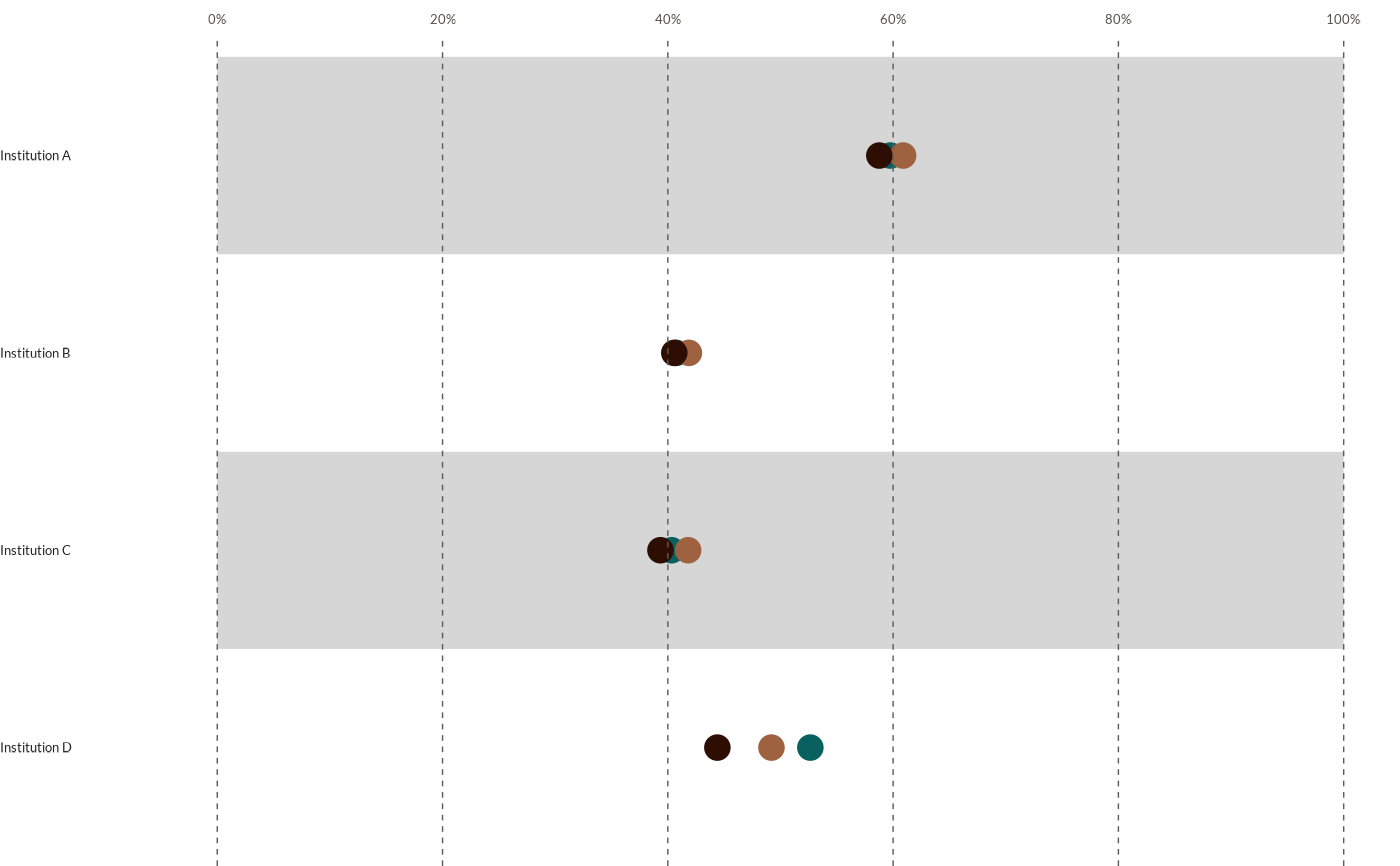wjp_dots() takes a data frame with a specific data structure (usually long shaped) and returns a ggplot
object with a dots chart following WJP style guidelines.
Usage
wjp_dots(
data,
target,
grouping,
colors,
cvec = NULL,
order = NULL,
diffOpac = FALSE,
opacities = NULL,
diffShp = FALSE,
shapes = NA,
draw_ci = FALSE,
sd = NULL,
sample_size = NULL,
bgcolor = "#ffffff",
ptheme = WJP_theme()
)Arguments
- data
Data frame containing the data to plot
- target
String. Column name of the variable that will supply the values to plot.
- grouping
String. Column name of the variable that supplies the Y-Axis labels to show in the plot.
- colors
String. Column name of the variable that supplies the grouping values. The plot will show a different color per group.
- cvec
Named vector with the colors to apply to the dots. Default is NULL.
- order
String. Column name of the variable that contains the custom order for the labels.
- diffOpac
Boolean. If TRUE, the plot will expect different levels of opacities for the dots. Default is FALSE.
- opacities
Named vector with the opacity levels to apply to the dots. Default is NULL.
- diffShp
Boolean. If TRUE, the plot will expect different shapes for the dots. Default is FALSE.
- shapes
Named vector with shapes to be displayed. Default is NULL.
- draw_ci
Boolean. If TRUE, will draw a binomial confidence interval with target value as parameter of interest.
- sd
String. Column name of the variable that supplies the standard error for drawing confidence intervals.
- sample_size
String. Column name of the variable that supplies the number of observations for drawing confidence intervals.
- bgcolor
String. Hex code for the "white" background in the strips.
- ptheme
ggplot theme function to apply to the plot. By default, function applies WJP_theme().
Examples
library(dplyr)
library(tidyr)
library(haven)
library(ggplot2)
# Always load the WJP fonts if not passing a custom theme to function
wjp_fonts()
# Preparing data
gpp_data <- WJPr::gpp
# Preparing data
data4dots <- gpp_data %>%
select(country, q1a, q1b, q1c, q1d) %>%
mutate(
across(
!country,
\(x) case_when(
x <= 2 ~ 1,
x <= 4 ~ 0
)
)
) %>%
group_by(country) %>%
summarise(
across(
everything(),
\(x) mean(x, na.rm = T)*100
),
.groups = "keep"
) %>%
pivot_longer(
!country,
names_to = "variable",
values_to = "percentage"
) %>%
mutate(
institution = case_when(
variable == "q1a" ~ "Institution A",
variable == "q1b" ~ "Institution B",
variable == "q1c" ~ "Institution C",
variable == "q1d" ~ "Institution D",
)
)
# Plotting chart
wjp_dots(
data4dots,
target = "percentage",
grouping = "institution",
colors = "country",
cvec = c("Atlantis" = "#08605F",
"Narnia" = "#9E6240",
"Neverland" = "#2E0E02")
)
